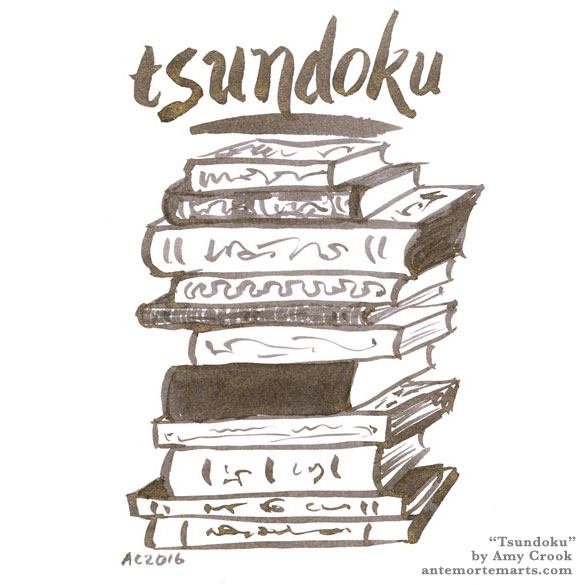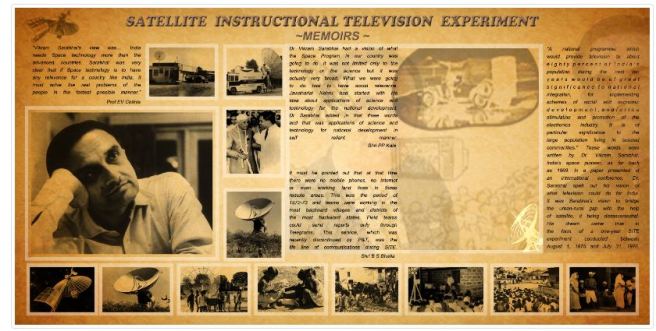In the month of April, as our Indian spring advances into the long and blazing hot summer, we have been witness to a variety of showers. These are the copious shedding of flowers from the profusely blooming trees that, in a beautiful sequence of blossoming, are heralding the change in seasons.
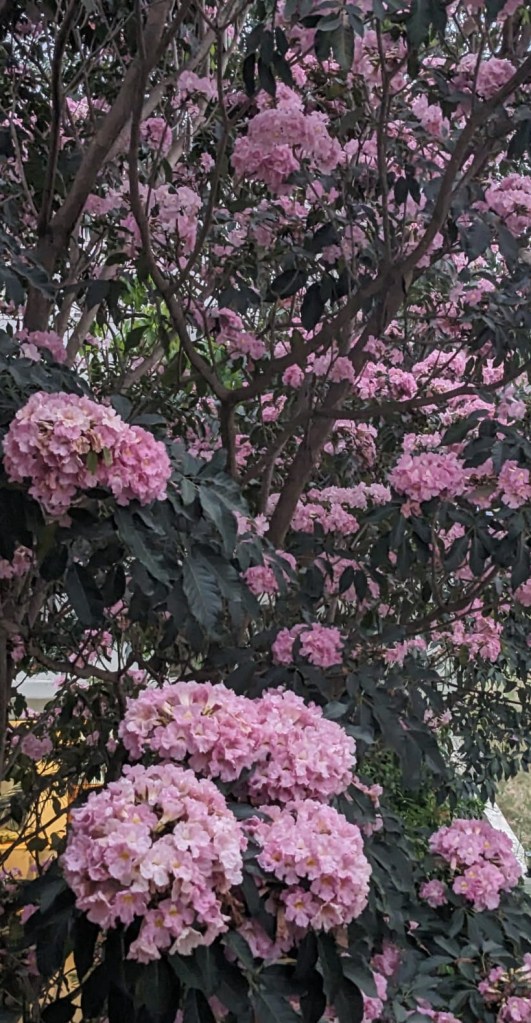
The first colours to touch the magnificent canvas were the exquisite pink-mauve hues of the Tabebuia rosea tree. This is the Rosy trumpet or Tecoma pink tree which is appropriately called Basant Rani (Queen of Spring) in Hindi. Almost overnight, the nearly leafless tree exploded into a profusion of pinkish- white trumpet-like flowers that literally wrapped the tree in a frothy cloud. Cities like Bangalore reveled in the sight of the avenues of these rosy ranis, while in my city we had to make do with a chance sighting of one of the few and scattered specimens of Tabebuia. I had the privilege of enjoying this beautiful sight of the single tree on my morning walk route. The glory was short-lived. Almost as quickly as it burst into blossom, the tree shed its flowers, overnight carpeting the area under the canopy with the delicate and faded flowers. One morning we were feasting on the full canopy, and the next morning there was nothing left on the tree but bare branches. The first delicate hues had been transferred to the canvas of summer.
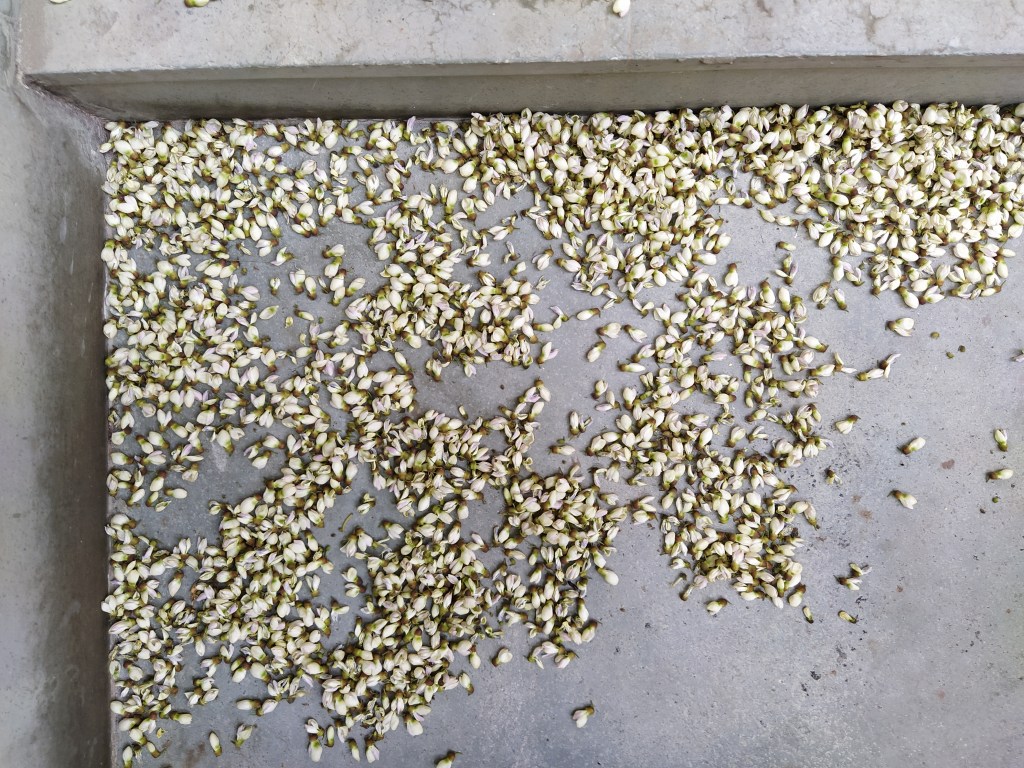
It was time to add more shades to the palette. It was the turn of the tiny eggshell-white neem flowers, and the slighter larger ivory karanj flowers to make their appearance. These emerged coyly amid the fresh foliage on their parent plants. The incredible shades of green, that defied definition or description, merged flawlessly with the blossoms. But while the leaves clung on firmly, the flowers, having played their brief but vital part in interaction with the birds and bees who thronged to feast on the nectar, began their graceful descent from the canopies, and carpeted the ground below. The neem flowers merged with the soil silently and unobtrusively. The karanj flowers made their presence felt with a crunch crunch sound when trod upon. The white faded from the canvas, even as the leaves took on deeper and darker shades of green.
As the summer sun gets stronger and the heat builds up, it is time for the palette to become more vibrant and vivid.
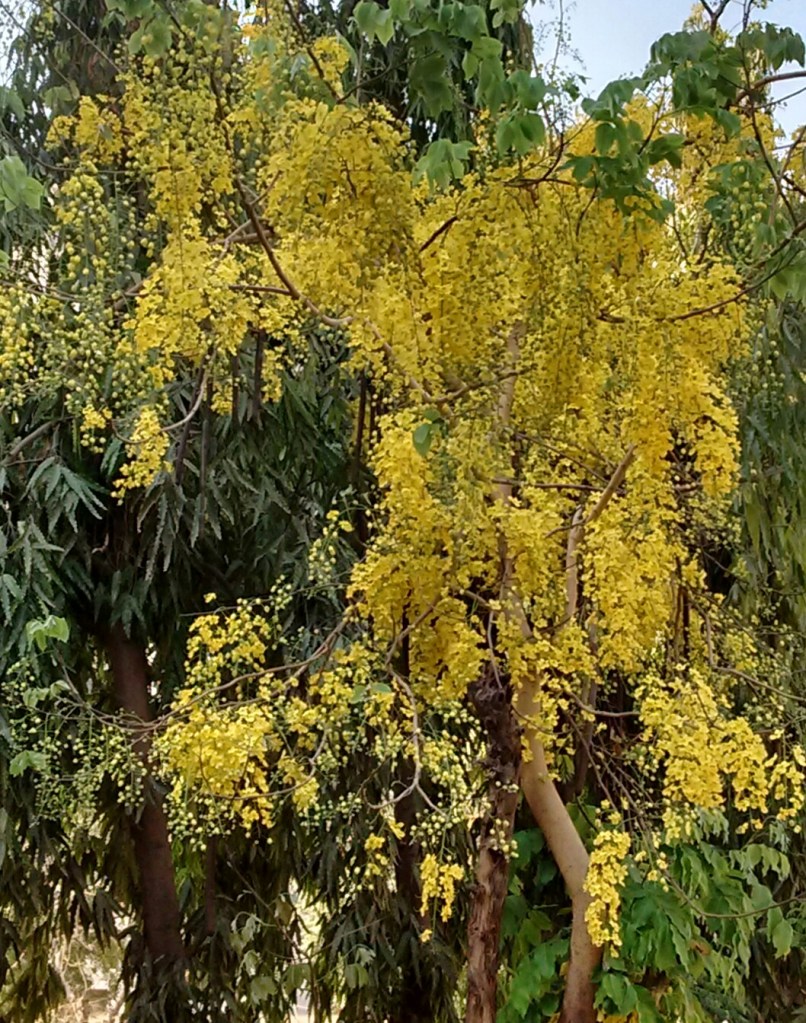
The first splash of colour is golden yellow. The Indian laburnum or Golden Shower tree is in bloom. Its masses of yellow blossoms cascade from the tree like waterfalls of molten gold. This usually nondescript tree starts with sprouting green-copper coloured leaves which are soon all but hidden in the mass of sprays of golden flowers. In the scorching sun, the blooming flowers are a magnet for a wide range of insects and birds which are important pollinating agents. The splash of gold shines and shimmers for a few weeks, but as the heat intensifies, the gold seems to gradually lose its gloss, and the hanging blossoms gently float to the ground to further fade as they prepare to merge with the earth.

As one yellow begins to fade, the palette is already being prepared with a more vibrant shade of yellow. It is time for the Copper Pod tree to enter the stage. With its wide spreading crown of many branches already covered in rich dark green feathery leaves, the contrast made by its turmeric yellow flowers is stunning against the pre-dawn grey sky. Unlike the flowers of the laburnum that cascade downwards in long clusters, the flowers of this tree bloom as dense bunches on long upright stalks at the ends of the branches. Individual flowers are small and delicate and have brown lines at the base of the petals.
It is these flowers that give the tree its other names like Yellow Flamboyant or Yellow Flame tree. It is also often called Peltophorum which is part of its botanical name Peltophorum pterocarpum. The name Copper Pod is derived from its fruit pods which are coppery brown at first and later become dark brown. The pods are 5-10 cm long and 2.5 cm broad with one or two seeds within. The shield-shaped pods give it yet another name of Rusty Shield bearer.
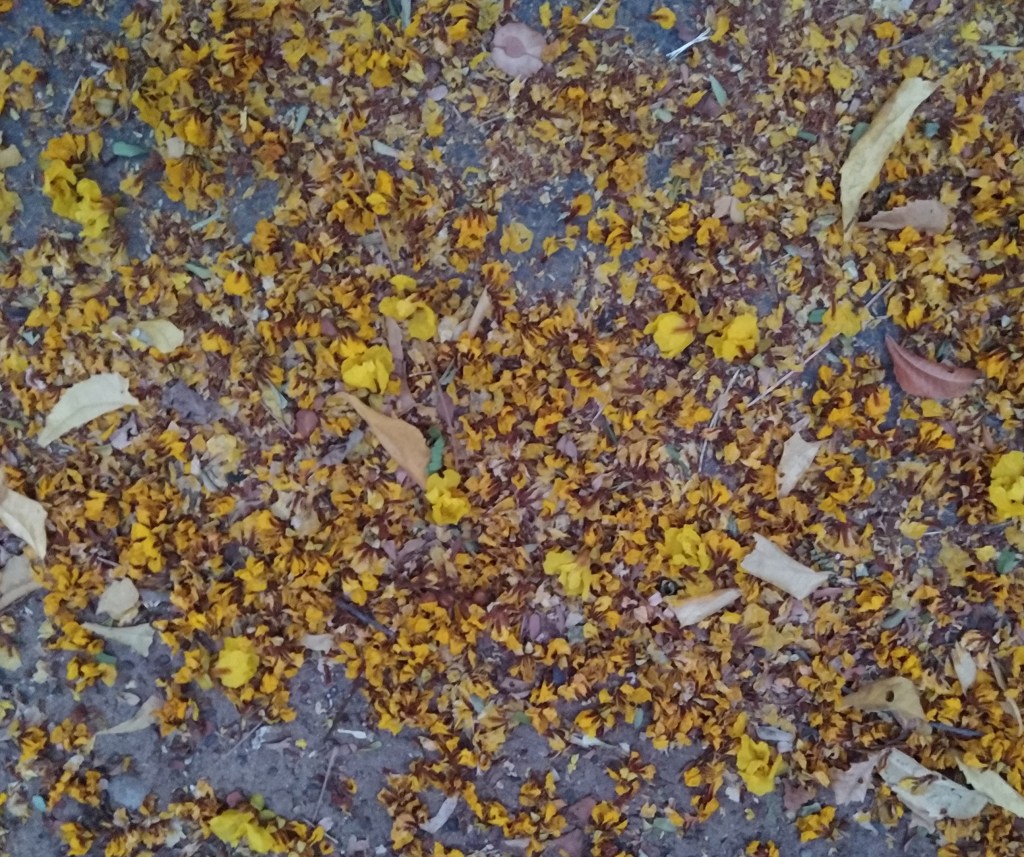
By whatever name we may choose to call it, this flamboyant tree is a great favourite for a wide variety of birds who use its abundant canopy for nesting, and who fill the air with an orchestra of calls with the break of dawn. They are joined by the silent activity of bats, squirrels and garden lizards who go about their business in the company of their feathered friends.
Even as the old flowers turn into pods, new flowers continue to bloom, as well as shed. The fallen flowers form a molten pool at its base. Unlike the laburnum, the flowers do not fade as they dry, and continue to attract attention even after they have left their lush green abode and travelled down to the earth.
With the swirling, sweeping brush strokes continuing to fill the canvas, it is time for the palette to ready the rich oranges and reds that will put the crowning strokes. The Gulmohar is ready to take the stage.

An elegant wide-spreading tree with delicate, fern-like leaves explodes in a riot of flame-red flowers. It really looks as if the tree is afire. Up close, each flower is made up of four spoon-shaped spreading petals which are a combination of scarlet and orange-red, and one upright petal which is marked with yellow and white. The flowers blend gracefully with the foliage making a breath-taking sight that stands out not only against the lightening early morning and darkening late evening sky, but equally in the yellow-white haze of the midday sun. The flowers drift to the ground, not as the downpours of the other trees, but sprinkle the earth with a delicate pattern in shades of crimson and scarlet.
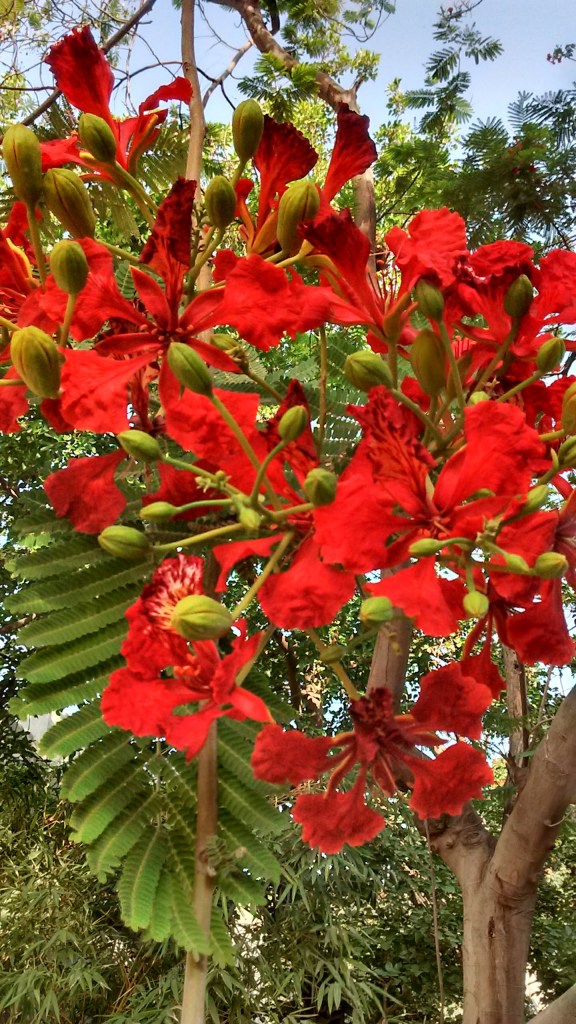
Nature’s palette has artfully mixed and matched hues and shades, light and shadow, form and function. The Indian summer masterpiece is complete!
–Mamata




